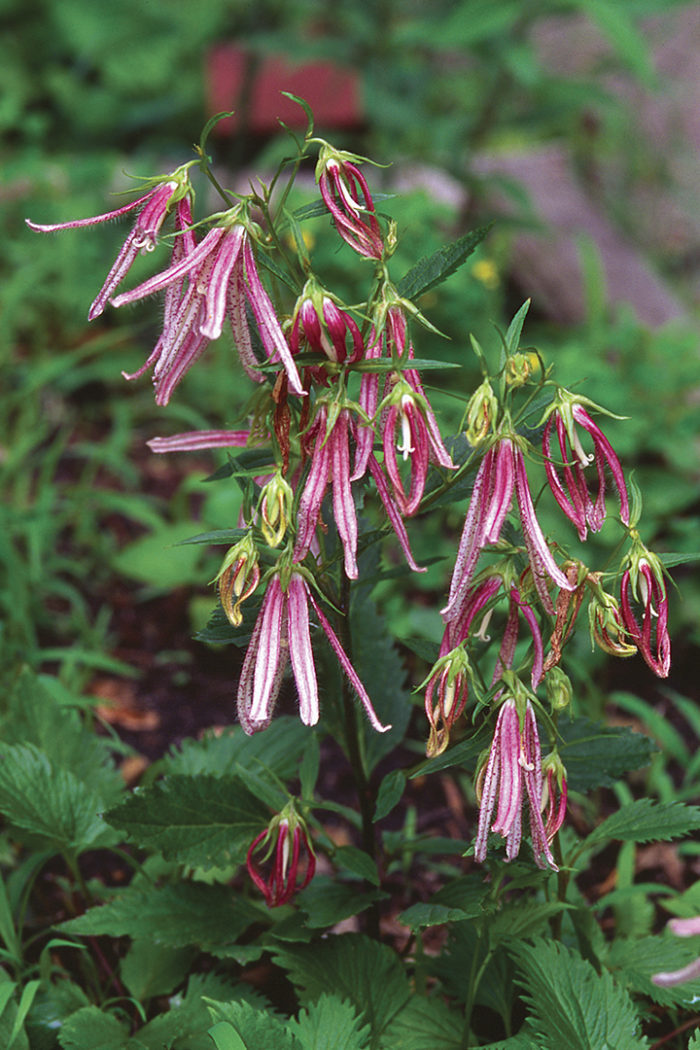
Sooner or later in the evolution of most landscapes, it becomes necessary to overcome the challenge of a dry-shade area. It’s a combination brutal enough to make any gardener cringe, occurring most often under the shade of deciduous or evergreen trees, where roots compete for moisture and nutrients, the soil is shallow and poor, and sunlight is limited. Though these areas can be a real challenge to garden in, many plants can adapt to them under the right conditions.
Plants in dry shade need to build a strong root system quickly. In areas with mild, wet winters, it is better to plant in fall to allow plants to become established over winter; in colder regions, early spring planting is best. Water new plants regularly until they become well established. After that, depending on where you garden and your annual rainfall, these plants won’t require consistent moisture to survive.
Get more plant for the price
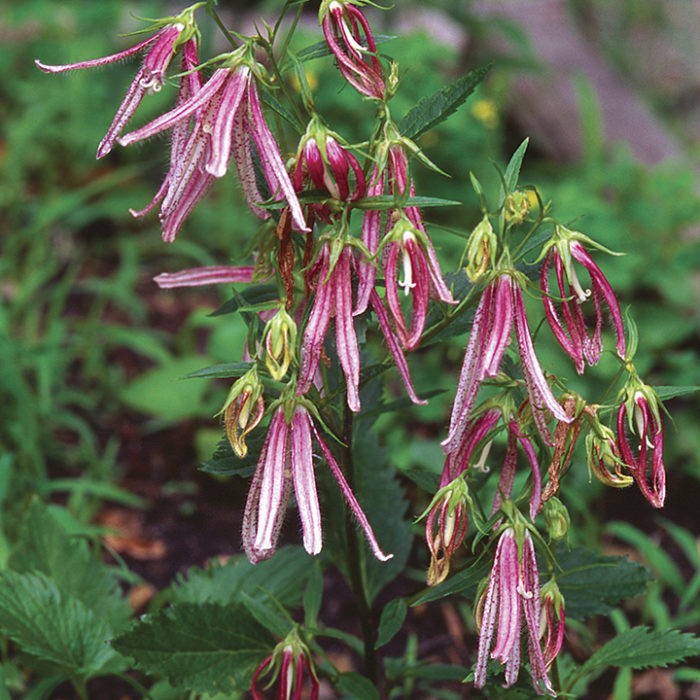
Name: ‘Pink Octopus’ spreading bellflower (Campanula ‘Pink Octopus’)
I have a penchant for vigorous, spreading plants. For the price of one plant I can get tons more for free. Plus, plants that spread out are naturals for dry shade; the expanded network of root systems feeds the whole plant, helping it get the water it needs. ‘Pink Octopus’ quickly forms wide mats of tall, deeply cut, light green foliage. Throughout spring, octopus-shaped, candy pink flowers float in a mass over the foliage, sporadically appearing throughout summer. I use this plant as the horticultural equivalent of a slipcover to coat large areas of shade quickly, especially because it can handle the extremes of my Texas climate. This perennial is maintenance-free, other than keeping it from encroaching on less vigorous plants.
USDA Hardiness Zones: 5 to 9
Size: 10 inches tall and 18 to 24 inches wide
Shade tolerance: Partial shade
Tradition never goes out of style
Name: Spuria iris (Iris cvs.)
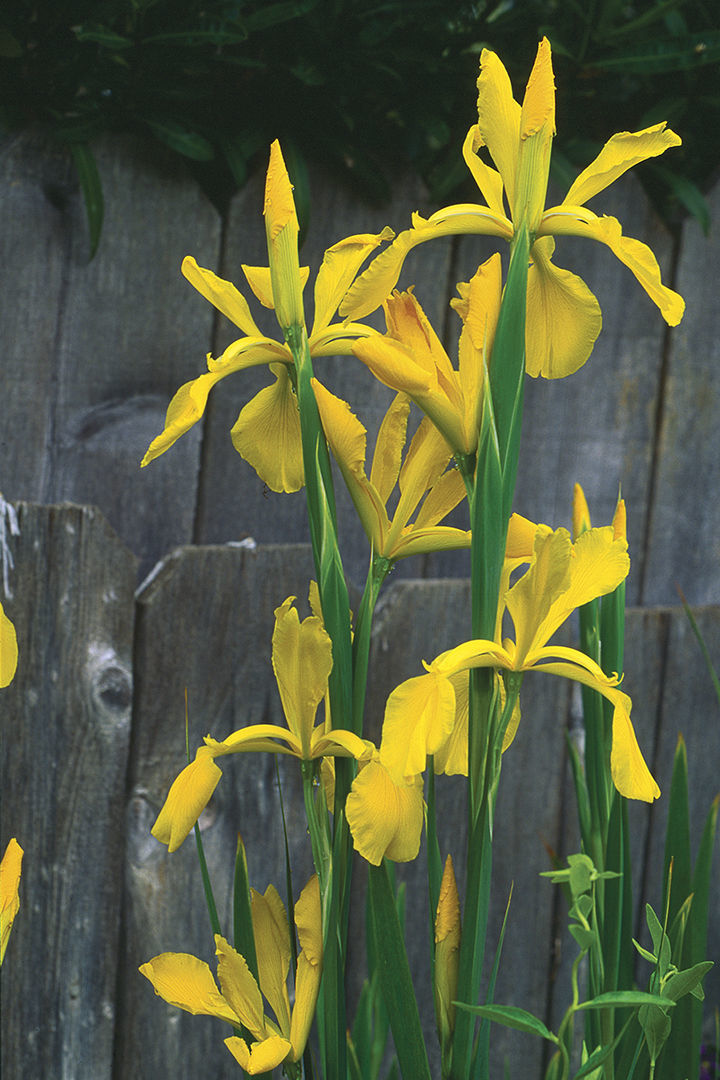
This forgotten survivor of many traditional gardens is tough enough to grow in full sun or partial shade. In early spring, the graceful grass like foliage is crowned with jewel-toned flowers, which resemble the more common Dutch irises (Zones 5–9). The foliage goes dormant in the heat of summer if the soil becomes too dry and then reemerges in the cooler temperatures of fall. The foliage is persistent through winter in warm zones, even while trees are dormant. Spuria iris comes in a plethora of color choices, and it makes an excellent long-lasting cut flower. Whether you purchase bare-root or divide existing plants, make sure to keep the roots moist at all times until replanted.
Zones: 4 to 9
Size: 3 to 5 feet tall and 2 feet wide
Shade tolerance: Full sun to partial shade
Slugs, deer, and rabbits hate it, but you’ll love it
Name: Hairy bergenia (Bergenia ciliata)
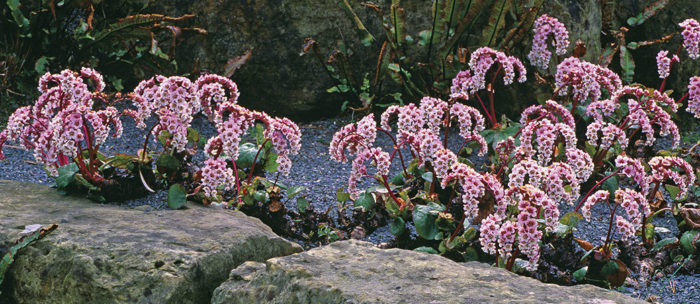
This is the most drought-tolerant bergenia I’ve found and the only one that does well in Texas heat. The large, hairy, critter-resistant leaves do not resemble other members of this genus; they look more like hairy plates or giant African violet leaves—hence, it’s common name. Mature plants will send up 10-inch-long stems of white to pale pink flowers from spring to early summer, but the real reason to grow this plant is its remarkable foliage.
In cooler regions, hairy bergenia grows not only in the shade but also in full sun. It isn’t particular about soil type or pH. Divide plants every three to five years to keep them vigorous.
Zones: 5 to 8
Size: 1 foot tall and 1 to 2 feet wide
Shade tolerance: Dappled to partial shade
This fast grower is made for the shade
Name: Chinese wild ginger (Asarum splendens)
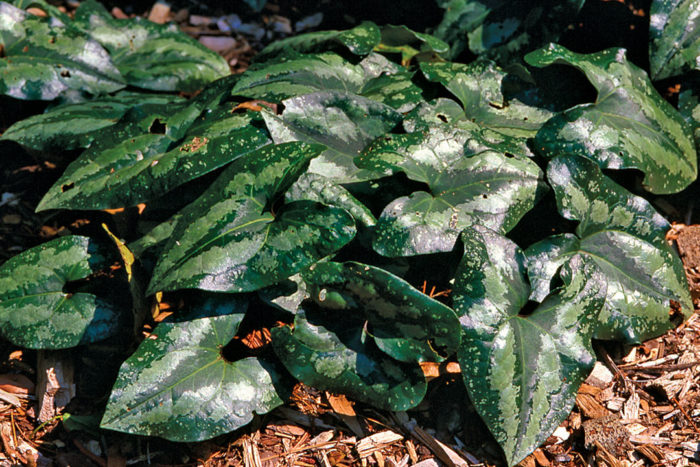
There are many species and varieties of wild ginger, but this vigorous, fast-growing, and beautiful species tops my list. Elongated, heart-shaped, dark green leaves look and feel as if they were made out of Naugahyde and splashed with metallic paint. The foliage shimmers when hit by a beam of light. It is evergreen to 10°F but will quickly reappear in the spring if it freezes. If you want to see the unique, 2-inch-wide, dark purple flowers, get on your hands and knees and look at the base of the plants. Though not particularly showy, they are interestingly attractive.
Plants spread quickly by underground rhizomes, forming a thick mat of foliage that crowds out weeds. I recommend spacing them 10 to 12 inches apart and letting them fill in over the next few years. Plants are not picky about soil pH or type, but they do best in well-drained areas.
Zones: 5 to 9
Size: 6 to 8 inches tall and 1 foot wide
Shade tolerance: Dappled to full shade
Meet the camel of the plant world
Name: Fish-scale sedum (Sedum tetractinum)
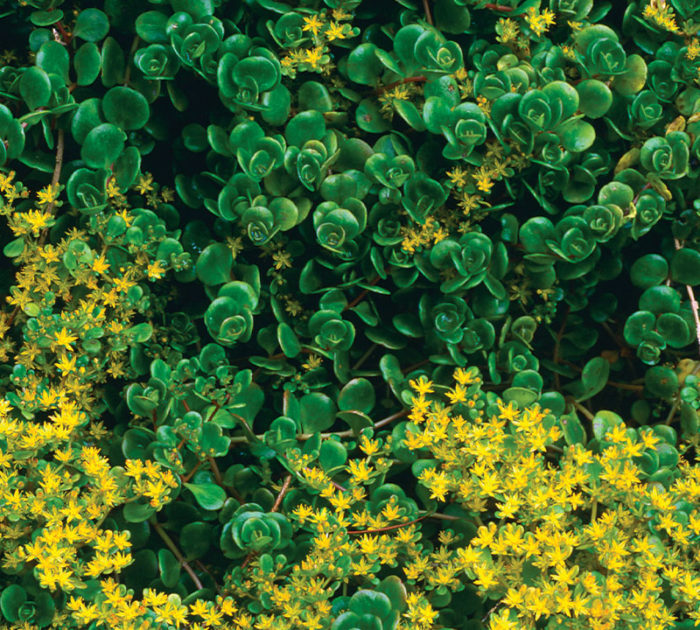
Plant a succulent sedum in the shade? Yes. Ground-cover sedums do well in dry-shade areas, especially in places that have high summer heat. Shallow, dry soils are no problem for this plant, as it stores extra water in its foliage. Fish-scale sedum spreads by runners forming a mat of overlapping, rounded foliage, which resembles fish scales. Bright yellow flower spikes appear over the shiny foliage during summer, and the cooler weather of autumn transforms the evergreen foliage to reddish bronze. I tuck this plant between exposed roots of deciduous trees, where little else will grow. Make sure not to plant in moist or waterlogged soils, as it will rot easily. Any piece of this plant will root to form a new colony, so it is easy to spread about the shade garden.
Zones: 4 to 8
Size: 3 inches tall and 18 inches wide
Shade tolerance: Full sun to partial shade
Turn on the spotlight
Name: ‘Tasmanian Angel’ variegated bear’s breeches (Acanthus mollis ‘Tasmanian Angel’)
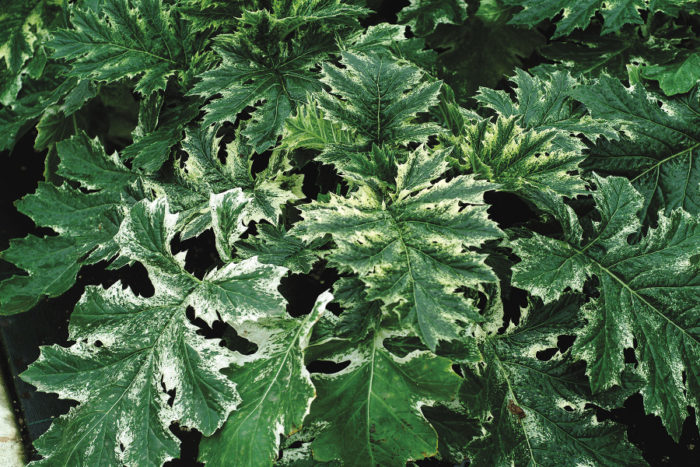
The familiar bear’s breeches gets a new look with the introduction of the first variegated variety: ‘Tasmanian Angel’. The bold foliage of this plant is now bordered and splashed with bright white and hints of pink, guaranteed to grab attention in shady areas. The strikingly tall clumps of foliage produce even taller spikes of white and pink flowers in late summer. I recommend regular watering the first year after planting to get plants to full-size and rooted in. Once established, ‘Tasmanian Angel’ handles dry shade and competition from tree roots, but it thrives in moist soils. Cut ‘Tasmanian Angel’ back to the ground after the foliage collapses with the first hard frost.
Zones: 7 to 10
Size: 3 feet tall and wide
Shade tolerance: Partial to full shade
Want an easy way to fill in shady gaps?
Name: Japanese yellow sage (Salvia koyamae)

At first glance, this Japanese woodland native does not look as if it belongs in a shade garden, but I find its spreading foliage and light-colored flowers do wonderfully as a small ground cover in dry-shade areas. Creamy yellow flower spikes sporadically appear from summer to fall, but hand-size, hairy green leaves are another attraction of this plant. It contrasts well with so many other fine-textured shade perennials that the flowers can be considered just a bonus. Japanese yellow sage is not choosy about soil pH or type. The spreading stems root as they touch the ground, eventually forming large, wide clumps. You can easily transplant any piece of rooted stem to fill gaps in your shade garden.
Zones: 6 to 10
Size: 18 to 24 inches tall and wide
Shade tolerance: Partial to light shade
Not even tough heat dims this bronze glow
Name: ‘Sweet Tea’ heucherella (Heucherella ‘Sweet Tea’)

Anyone who gardens in the shade is familiar with heucherella. ‘Sweet Tea’ was bred using Heuchera villosa, a native of the eastern United States, as one of its parents, which has added enough resistance to heat, drought, and humidity to make it able to handle even the extreme climate of Texas. ‘Sweet Tea’ has large, stained, orange-bronze leaves with dark burgundy veins and short spikes of small white flowers that appear in early spring. Its brightly colored foliage, however, is the main reason to have this plant. Give it well-drained soil, and lift and divide it every couple of years.
Zones: 4 to 9
Size: 12 to 18 inches tall and 28 inches wide
Shade tolerance: Partial to full shade
Why not go big and tall?
Name: Dixie wood fern (Dryopteris australis)
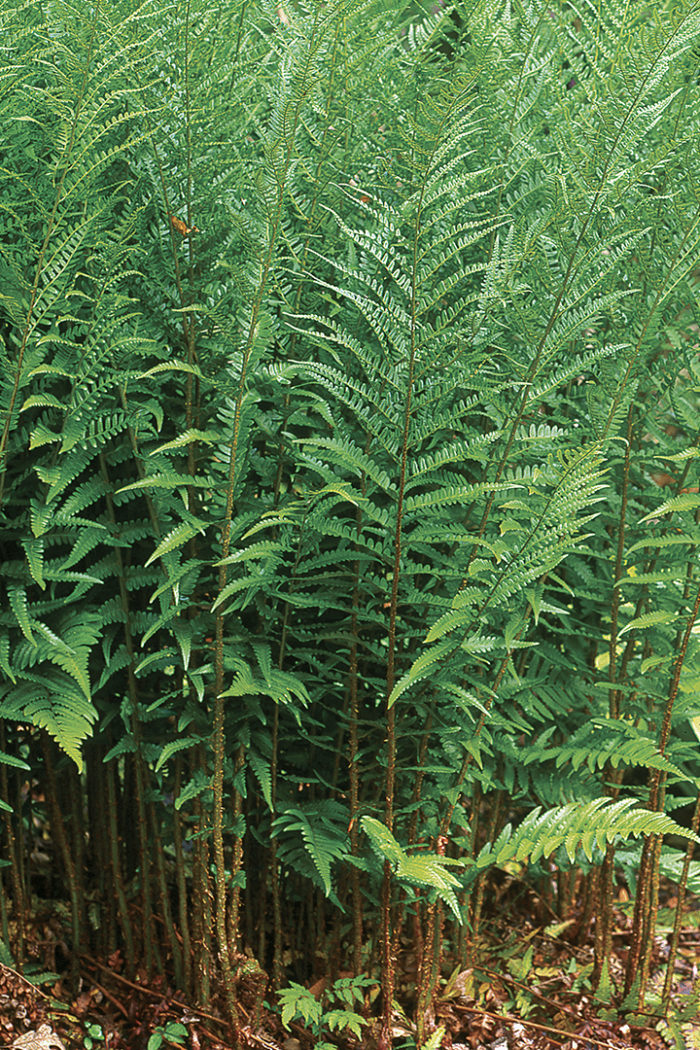
Thanks to the miracle of tissue culture, this southern native, a naturally occurring hybrid of Dryopteris celsa and D. ludoviciana, is finally available to gardeners everywhere. This big, bold fern has glossy, dark green leaves that shoot straight up. Looking like a southern wood fern (D. ludoviciana, Zones 5–9) on steroids, this fern is a natural for backdrops in shade beds. In warm climates, the foliage is semievergreen, but I recommend removing any ragged leaves in early spring as the new fiddleheads emerge. Although this tough, adaptable fern will grow well in full sun with moist soils, it also easily handles dry-shade sites.
Zones: 5 to 9
Size: 3 to 4 feet tall and 2 feet wide
Shade tolerance: Partial to full shade
All shade is not created equal
It’s important to define shade terms because gardeners and garden books have their own definition.
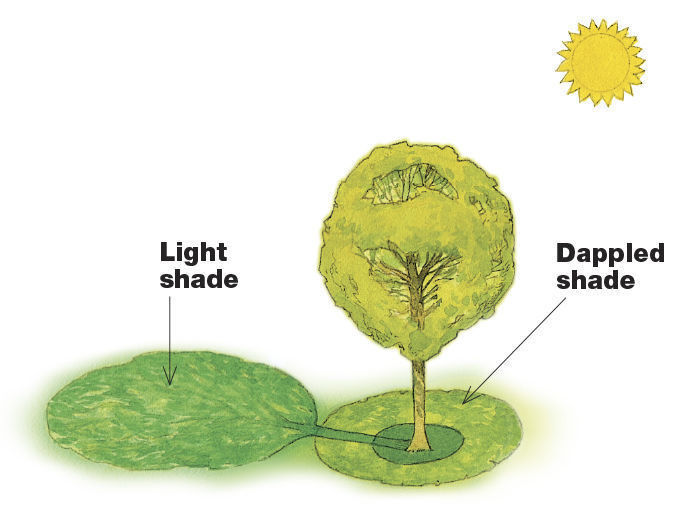
Light shade refers to those areas that only receive a few hours of shade during the day, with the rest of the day in full sun. Light shade is sunnier than partial shade.
Dappled shade refers to areas under deciduous trees where the light peeks through for most of the day.
Partial shade refers to areas that receive full sun early in the morning or late in the afternoon as the sun angles in under trees or isn’t blocked by fences or buildings.
Full shade refers to areas that receive no direct sunlight all day.
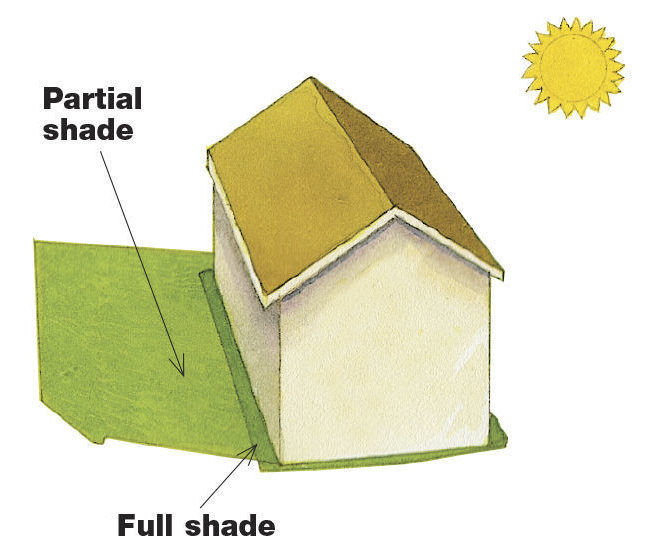
Smart ways to tackle dry shade
If you think you have to treat your dry-shade areas as a lost cause—more barren than the desert—think again. In most cases, a few simple tips will alleviate the problem enough to create a more workable environment.
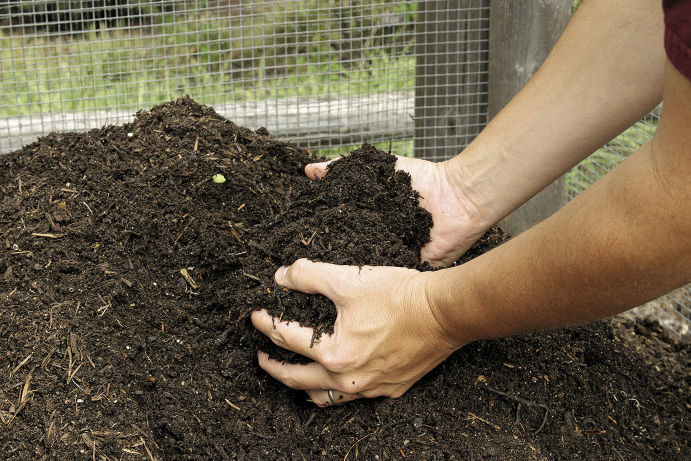
Amend your soil
Dry shade is often coupled with poor, shallow soils. Amend these soils and, whether sandy or clay, mulch with compost to improve soil quality and increase moisture retention (dump the less efficient shredded or chipped hardwood mulch). If you have clay soils, incorporate expanded shale to increase the drainage.
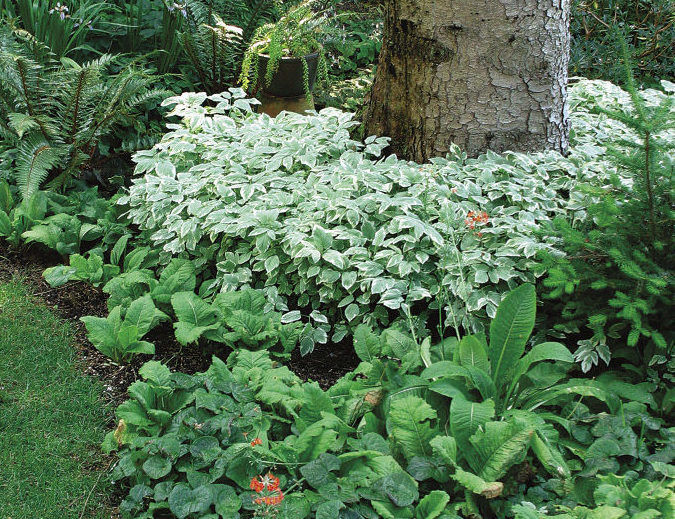
Don’t till under trees
Plant perennials, instead, between exposed roots, and allow plants to spread over them.
Use liquid fertilizer
Most dry-shade areas are a product of mature trees, which are masters at nutrient uptake. For this reason, liquid fertilizer—applied with a watering can or hose-end applicator—is a better option than granular forms for targeting the nutrients to just the perennials. Otherwise, your tree’s massive root system will steal nutrients from the comparatively tiny root systems of your perennials.
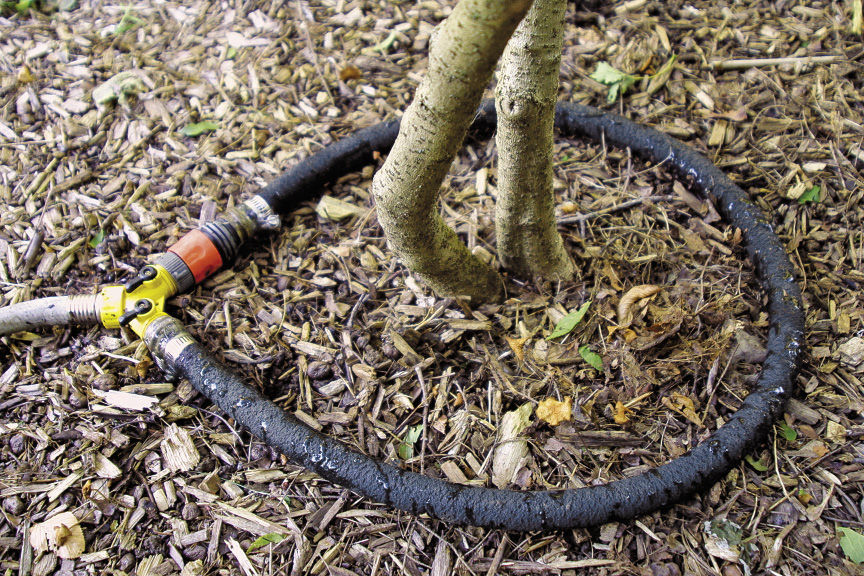
When you must water, water deeply
If soils are compacted, it might be better to use soaker hoses or to run overhead irrigation in short bursts several times to give the ground time to absorb as much water as possible.
Jimmy Turner is senior director of gardens at the Dallas Arboretum in Dallas, Texas.
Photos, except where noted: Jerry Pavia
Illustrations: Gary Williamson
Sources
- Forestfarm, Williams, Ore.; 541-846-7269; forestfarm.com
- Plant Delights Nursery, Raleigh, N.C.; 919-772-4794; plantdelights.com
Fine Gardening Recommended Products

Ho-Mi Digger - Korean Triangle Blade
Fine Gardening receives a commission for items purchased through links on this site, including Amazon Associates and other affiliate advertising programs.

Attracting Beneficial Bugs to Your Garden, Revised and Updated Second Edition: A Natural Approach to Pest Control
Fine Gardening receives a commission for items purchased through links on this site, including Amazon Associates and other affiliate advertising programs.

Spear & Jackson 4930FZ Razorsharp Telescopic Tree Pruner
Fine Gardening receives a commission for items purchased through links on this site, including Amazon Associates and other affiliate advertising programs.

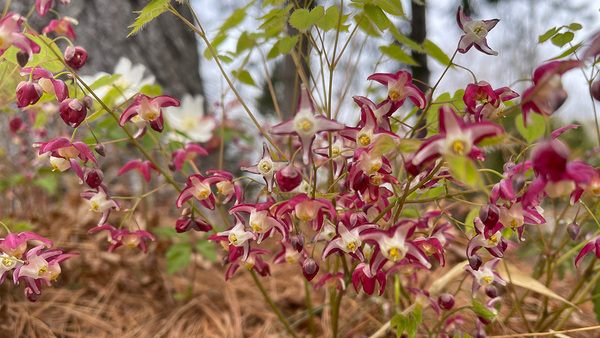















Comments
Log in or create an account to post a comment.
Sign up Log in